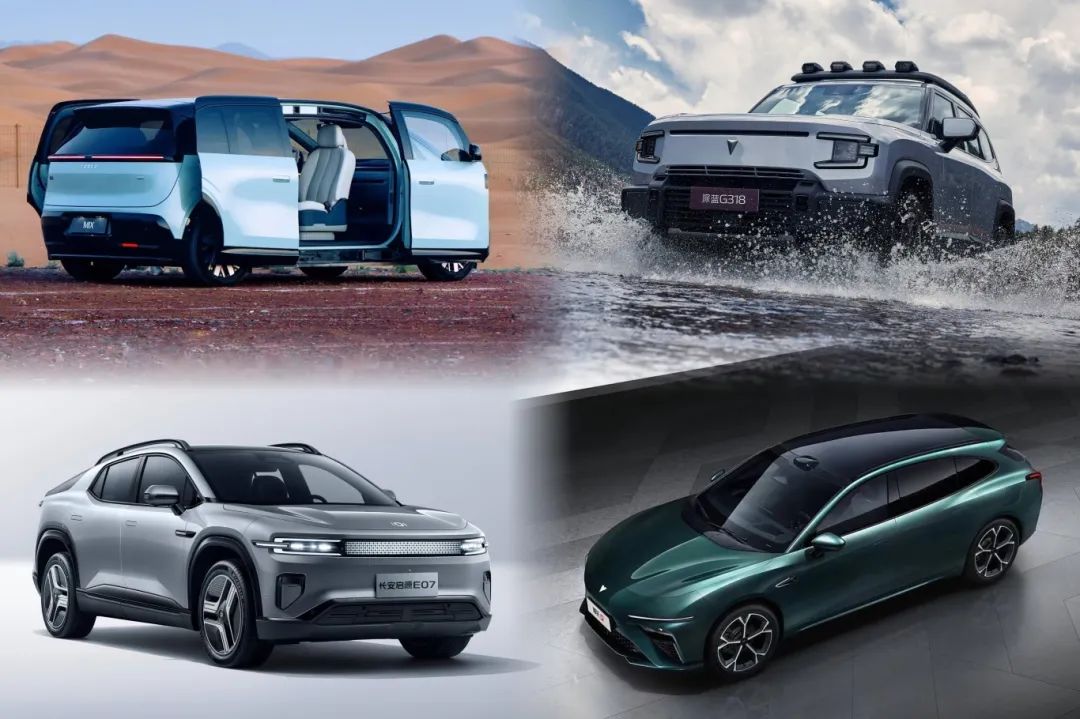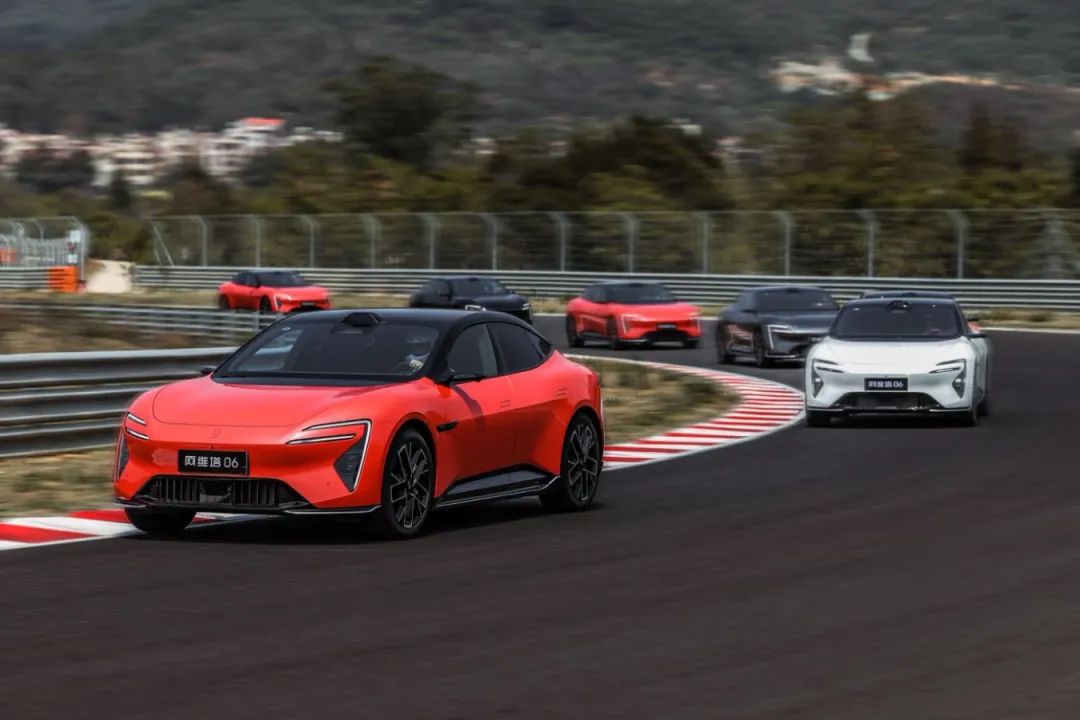When Low Prices Reign, Does Car Make Really Matter?
![]() 04/23 2025
04/23 2025
![]() 404
404

Introduction
Price, price, and price again. Who would have predicted that competition in China's auto market would become so monotonous?
In today's market, where technology evolves relentlessly and marketing tactics are in constant flux to cater to consumers, what semblance is China's auto market presenting?
Faced with aggressive Chinese enterprises, joint ventures seem silenced, struggling to devise effective personalized solutions beyond clinging to the domestic electrification industry's supply chain. The differentiation among new players is also intensifying in this battle, with some thriving freely while others facing trials in 2025.
As an observer, witnessing wave after wave of industry opinion, it's unclear what the market should truly resemble at this juncture.
However, as competition rages across various dimensions, purely from a consumer psychology perspective, I argue that today's users predominantly demand comprehensive models or those whose value aligns with their wallets. In other words, at this stage, when buying a car, what model does it matter? As long as the price is right, everything else is secondary.

The essence of product disenchantment seems to be the loss of individuality. Given this consumer mindset where everything revolves around cost, such a trend is not unwarranted. However, as segmented market demands become increasingly similar, automakers' judgments on product R&D and the direction of the auto market seem led by this trend.
Today, the product classification standard has lost its meaning, and the price system no longer supports product categorization. When companies choose to abandon maintaining product value across levels to seize market share, we wonder if this state is sustainable. We can only hope that perhaps one day, when China's auto market again presents a virtuous cycle, a new order will emerge.
Until then, based on the auto market's overall environment in 2025, all automakers can engage in endless competition, from product positioning to marketing tactics, from price wars to public opinion trends, without hesitation in mutual attacks.
01 Has Price Become the Sole Sales Indicator?
In the past two years, honestly, competition in China's auto market has resembled a full-scale melee. Autonomous automakers aim for joint ventures' market share, while traditional automakers employ various tactics to disrupt new forces. This amalgamation makes the market appear excessively brutal and inhumane.
In this state, the new car market's backdrop is naturally not as ordinary as before. The most evident phenomenon is that after exploring personalized models, automakers have become exceedingly cautious about introducing new products. "No weird cars, no expensive cars" has become the guiding principle for surviving the 2025 auto market turmoil.

After witnessing the launch and subsequent decline of models like the ZEEKR MIX, QIYUAN E07, and Nezha S Shooting Brake, automakers must reflect on their manufacturing methods. Pleasing young consumers doesn't necessarily mean taking unconventional paths or going to extremes.
In the last quarter, examining the new cars continuously emerging in the market, you'll find that new cars like the LYNK & CO 900, WENJIE M8, Trumpchi Xiangwang S7, Hyperion HL, QIYUAN Q07, and SL03 share a prominent feature: they lack bizarre design, compromising towards pragmatism.
Moreover, as the entire auto market is shrouded in a price war's shadow, new cars' decreasing prices have shattered our previous perceptions. This is what we call product disenchantment.
In the past, no matter how fierce auto market competition was, at the product level, clear model classifications and price ranges were at least subconsciously recognized by automakers.
What a compact sedan generally looks like and what a mid-size SUV should resemble are rules that no one would easily change. After all, any brand's product library won't contain just one model. Disrupting common sense to introduce new products isn't beneficial. If one insists on the unconventional, it's necessary to actively explore other segmented markets.

Starting from the second half of last year, as market competition's disorder began to emerge, to survive or rely on first-mover advantages, launching low-priced new cars at various levels became more frequent. You could say that a price war is just a tangible manifestation of automakers losing money to attract customers, but ultimately, it's about providing extreme cost-effectiveness.
How to buy better products with less money and higher-level models with less money is this war's essence. However, as this trend spreads, the resulting order disruption is still very apparent.
As everyone knows, in a company's competitiveness-deficient stage, product dimensionality reduction has long been a tradition in China's auto market. If a weak brand wants to sell cars, it must offer larger-sized models at cheaper prices compared to same-level products. Most past autonomous brands were typical examples.
But once all mainstream automakers employ this method, it not only compresses joint ventures and imported brands' future market space but also forms a new consumer perception: a B-class sedan is worth a maximum of 150,000 yuan, and a 5-meter-long mid-size SUV is worth 200,000 to 300,000 yuan. Ultimately, automakers' new cars can't fetch a high price, brand premium is almost non-existent, and in future technological involution, a significant R&D expenditure will still be needed for iteration.
02 In the End of Involution, Who Benefits?
Actually, when BYD, Geely, and other leading automakers contemplated price reduction methods last year, outsiders always exclaimed that Corolla and Sylphy should sell for 60,000 yuan, and Passat and Camry for 120,000 to 150,000 yuan. Emotionally, this outcome doesn't seem wrong. Who asked Chinese enterprises to compress same-level product costs to the extreme? Foreign companies can't keep up; they deserve it.

But now, after market training, when more people believe cars are just consumables, regardless of configuration fancy, for enterprises, product homogenization and low prices have become prevalent, and it's increasingly difficult to leverage this trend to escape the vicious cycle.
China's auto market has its survival rules. The huge market has spawned numerous automakers. As time passes, automakers' understanding of competition naturally differs greatly from international giants.
Just like this Shanghai Auto Show, enterprises still at the center are shouting at each other, each unveiling new products to compare who's cheaper and who can better impress consumers. Those choosing to leave must have their reasons. But for involutional development, I estimate no one has the ability to provide an effective solution.
However, from another perspective, as the only enterprise participating in market competition remains, and consumer trends gradually set a benchmark in the footsteps of the new four modernizations, starting from this Shanghai Auto Show, compared to the more tragic competition between products and technologies, perhaps some also anticipate companies giving their own attitudes regarding corporate culture, brand stories, etc.
Honestly, as an observer, watching the entire industry deeply mired in the price war's quagmire and unable to extricate itself, the body is tired, and the heart is even more anxious. Under existing car usage needs, looking at each new car, there's no longer the emotion generated when seeing the ideal ONE years ago. Is it doubt or joy? In fact, it loses meaning the moment the price is announced.

Many times, when more foreign automakers raise the question, what products suit Chinese users? We'd say that as Chinese automakers strive for technological equality, creating a values gap between Chinese and foreign enterprises, future products capturing hearts can only follow the Chinese way of thinking.
But we must admit that from the current new car offensive, we can also see that being overly obsessed with price has put the entire industry in a sub-health state of exhaustion. When it can exit this state remains unknown.
And the mutual slaughter among numerous similar products, the wrestling between same-price products, in the end, besides filling the entire industry with chaos, there seems little left that can truly promote cooperative and win-win guidelines. Even though many joint ventures have begun learning to bow to Chinese automakers, upon delving, I believe these money-losing customer attraction actions are out of necessity.
So what can Chinese enterprises, enthusiastic about this, gain after using extraordinary means to reduce dimensionality and attack any segmented market? Is it the momentary pleasure after low-price competition? Or is it the peace of mind brought by the short-term psychological "massage" of disdaining brand building and just wanting to sell more cars? I'm afraid only they know.
Editor in Chief: Cao Jiadong | Editor: He Zengrong







